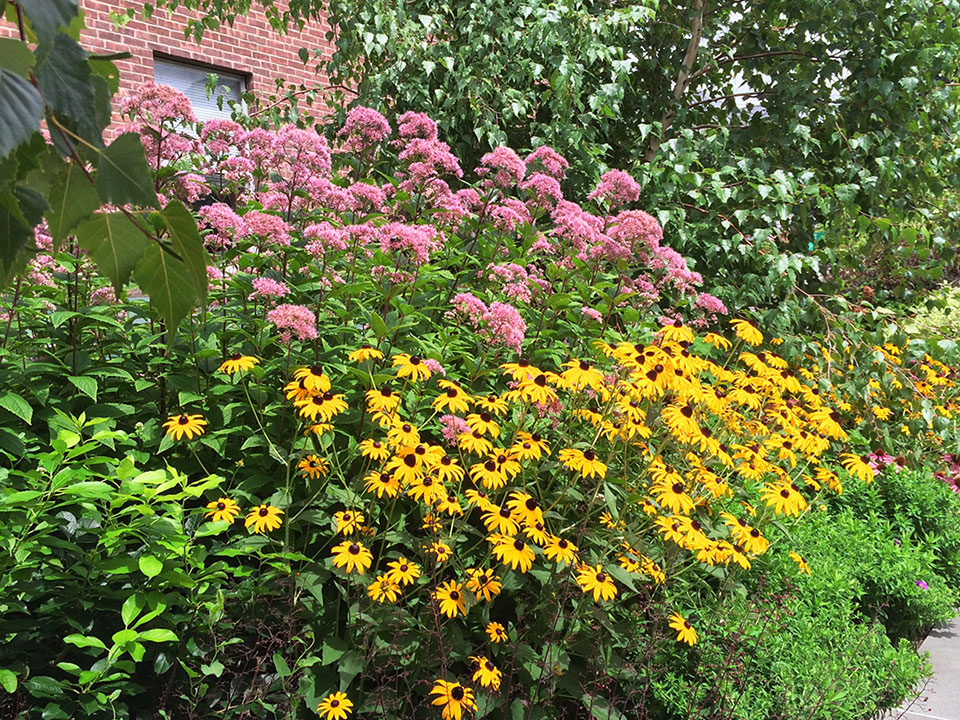As a residential landscape designer practicing in New York City and surrounding areas, I speak from professional experience and studies.
A native plant is a species that occurs naturally in a particular region, ecosystem and/or habitat and was present prior to European settlement in the United States. (Elsewhere in the world, there are different parameters.) Native prairie, woodland and wetland plants have evolved to thrive in our natural conditions and, after the first season or two of establishment in your garden, typically require less maintenance than a conventional lawn or garden.
They have adapted to the geography, hydrology, and climate of that region. Native plants occur in communities, that is, they have evolved together with other plants. As a result, a community of native plants provides habitat for a variety of native wildlife species such as songbirds and butterflies.
It’s important to understand that a commercial or residential landscape design may often be very different from the native conditions where a plant originated, even if they are found in the same state. For the success of any plant, install the plant in similar conditions (light, soil, water/humidity, temperature, ph, etc) that you would find it in nature. Hence the axiom “right plant, right place”.
Native plantings—prairie and woodland gardens, rain gardens set in a residential landscape design—are much more effective than lawn grass in slowing down stormwater and filtering out chemicals contained in it. The deep roots of many native species are able to absorb, hold, and gradually release this water—water that would otherwise rush into nearby bodies of water, eroding their banks and delivering pollution.
Some natives have incredible root systems that support the plants in times of drought. Compared with the roots of most non-native plants, warm-season grasses and flowers have a deep, extensive root system that helps absorb moisture and prevent erosion. Many species of prairie plants have roots that extend four to eight feet into the soil, while cool-season non-native grasses, such as Kentucky blue grass extend only a few inches into the soil. Deep roots allow native plants to withstand long periods of dry weather and so they require little or no watering after they are established.
According to the Lady Bird Johnson Wildlife Center, a native landscape provides so much more than just water conserving features. Native landscapes provide habitats for wildlife and encourage the presence of native insects and microorganisms that benefit plants by keeping them healthy without the use of chemical fertilizers and pesticides. Even in the urban setting of a New York City garden design, my clients enjoy the entertaining value offered them when native plants attract butterflies and other pollinators. It’s magical!

















